Assignment || Operations Management
VerifiedAdded on 2022/08/29
|7
|685
|17
AI Summary
Contribute Materials
Your contribution can guide someone’s learning journey. Share your
documents today.
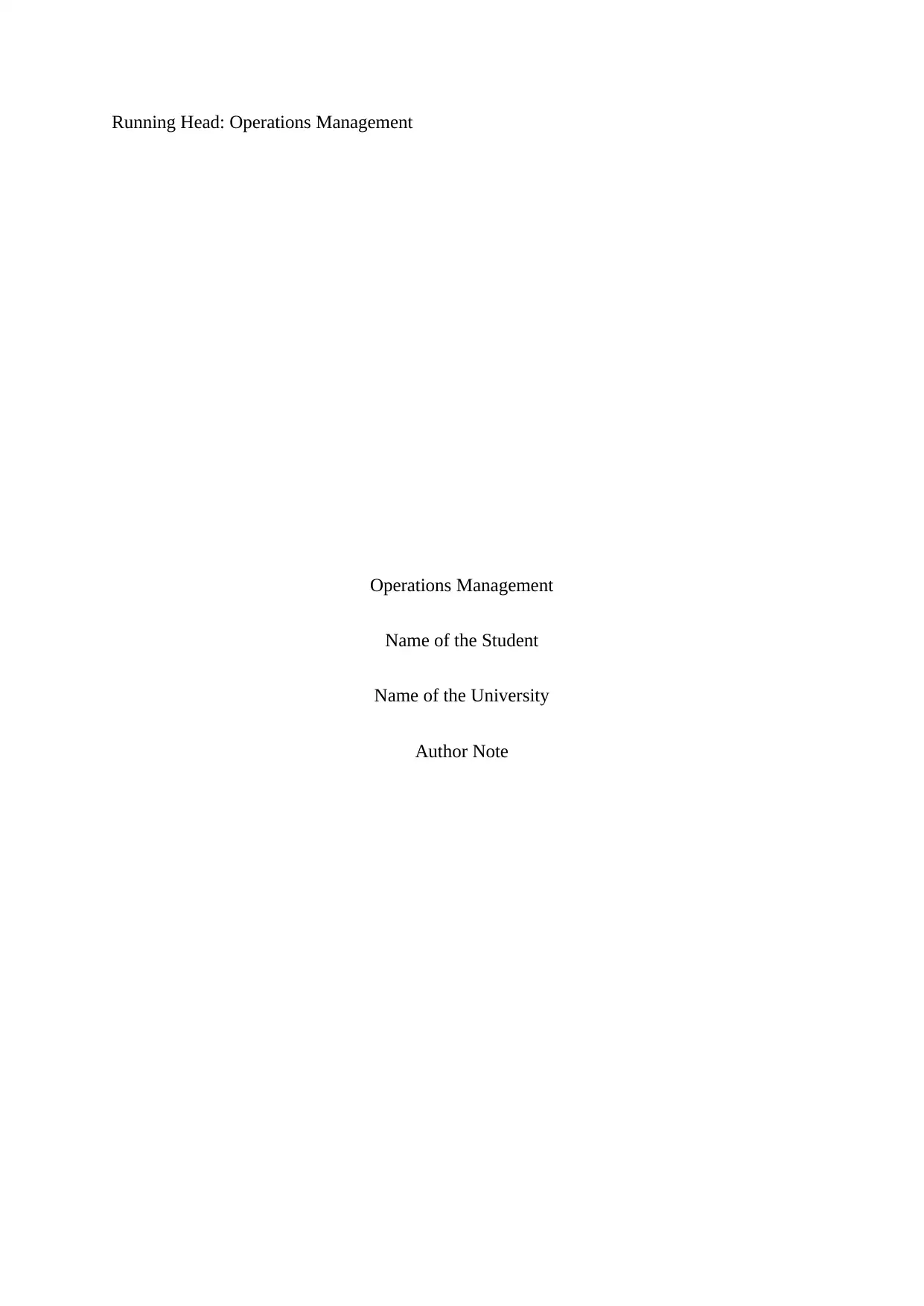
Running Head: Operations Management
Operations Management
Name of the Student
Name of the University
Author Note
Operations Management
Name of the Student
Name of the University
Author Note
Secure Best Marks with AI Grader
Need help grading? Try our AI Grader for instant feedback on your assignments.
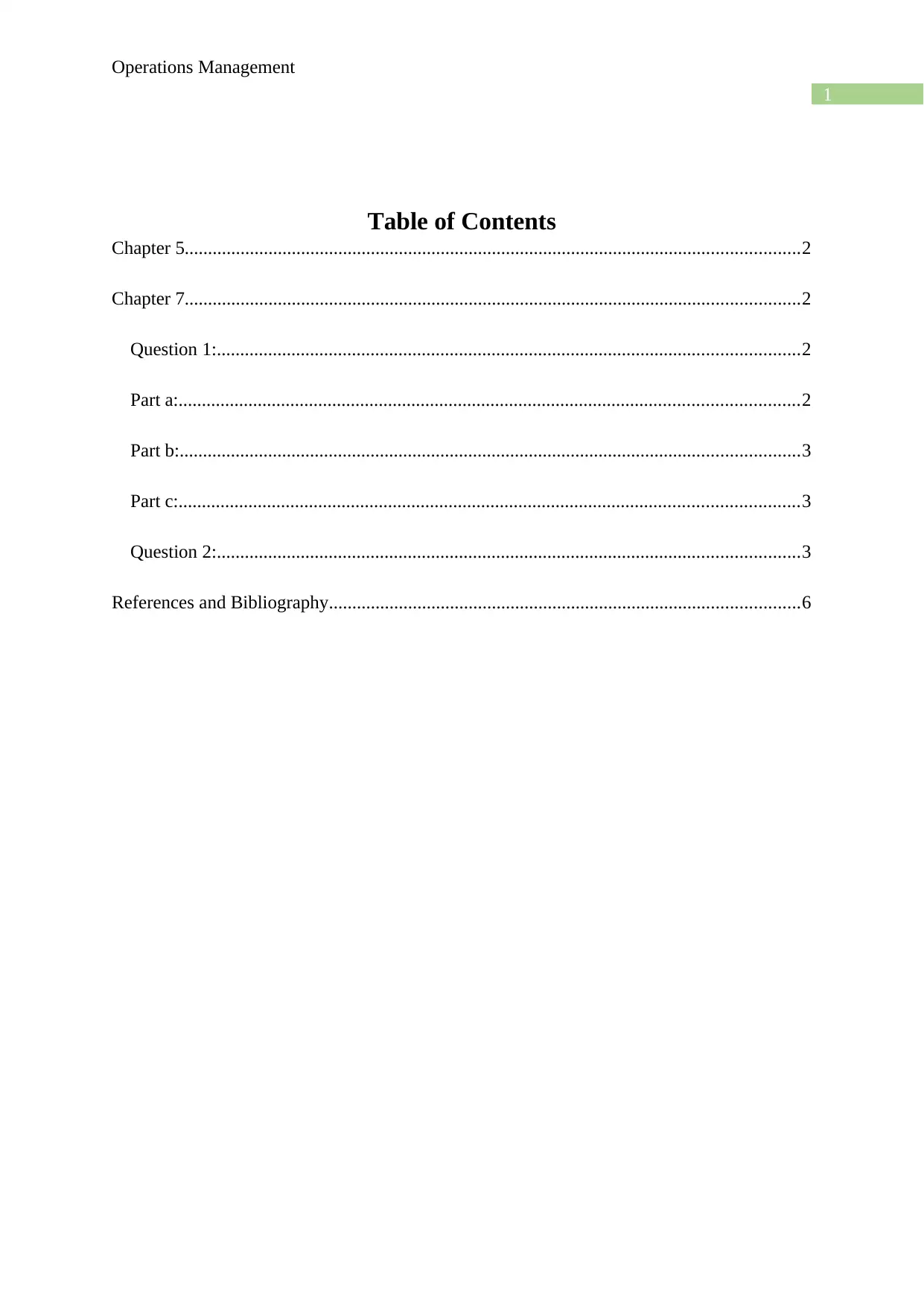
1
Operations Management
Table of Contents
Chapter 5....................................................................................................................................2
Chapter 7....................................................................................................................................2
Question 1:.............................................................................................................................2
Part a:.....................................................................................................................................2
Part b:.....................................................................................................................................3
Part c:.....................................................................................................................................3
Question 2:.............................................................................................................................3
References and Bibliography.....................................................................................................6
Operations Management
Table of Contents
Chapter 5....................................................................................................................................2
Chapter 7....................................................................................................................................2
Question 1:.............................................................................................................................2
Part a:.....................................................................................................................................2
Part b:.....................................................................................................................................3
Part c:.....................................................................................................................................3
Question 2:.............................................................................................................................3
References and Bibliography.....................................................................................................6
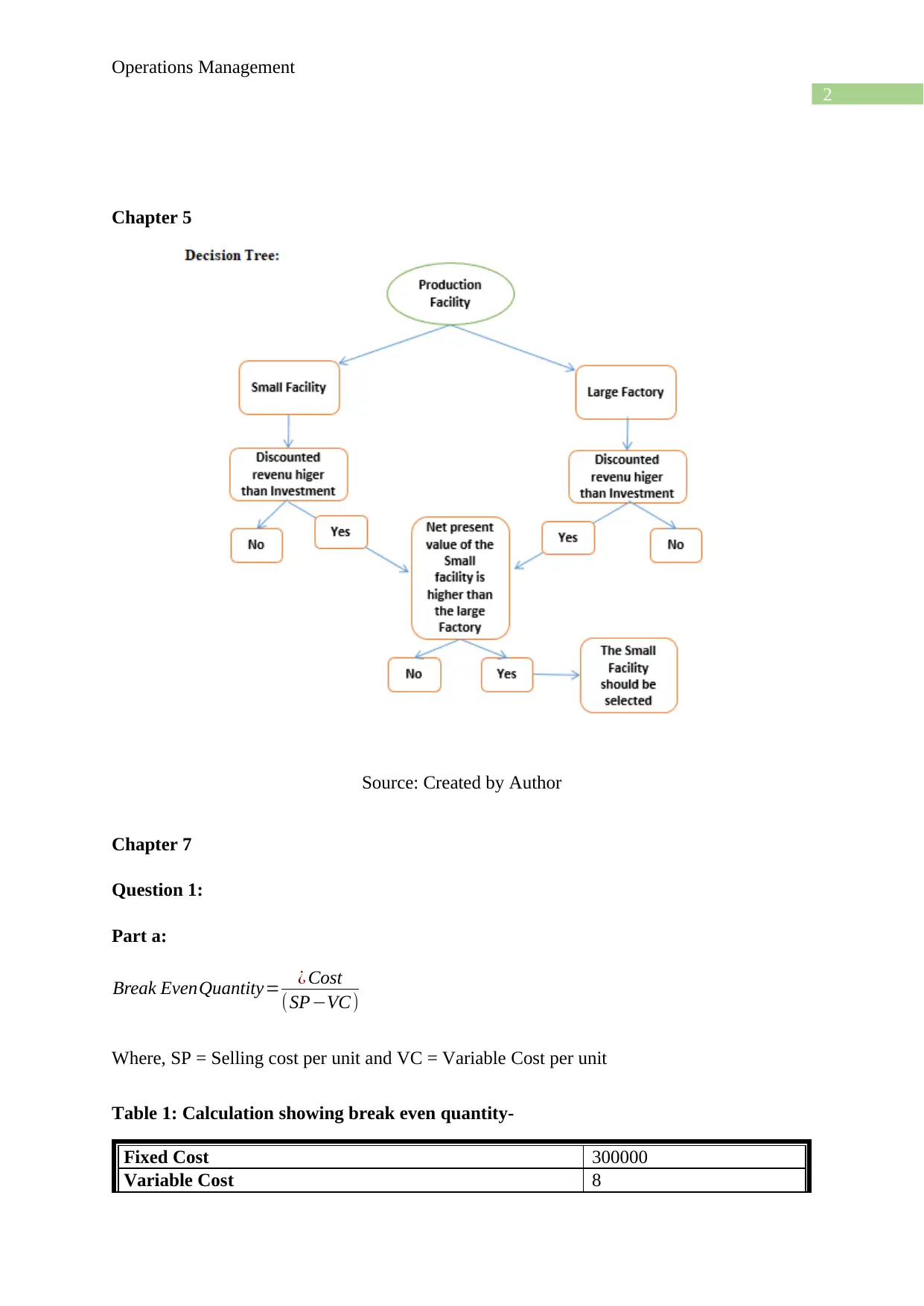
2
Operations Management
Chapter 5
Source: Created by Author
Chapter 7
Question 1:
Part a:
Break EvenQuantity= ¿ Cost
(SP−VC)
Where, SP = Selling cost per unit and VC = Variable Cost per unit
Table 1: Calculation showing break even quantity-
Fixed Cost 300000
Variable Cost 8
Operations Management
Chapter 5
Source: Created by Author
Chapter 7
Question 1:
Part a:
Break EvenQuantity= ¿ Cost
(SP−VC)
Where, SP = Selling cost per unit and VC = Variable Cost per unit
Table 1: Calculation showing break even quantity-
Fixed Cost 300000
Variable Cost 8
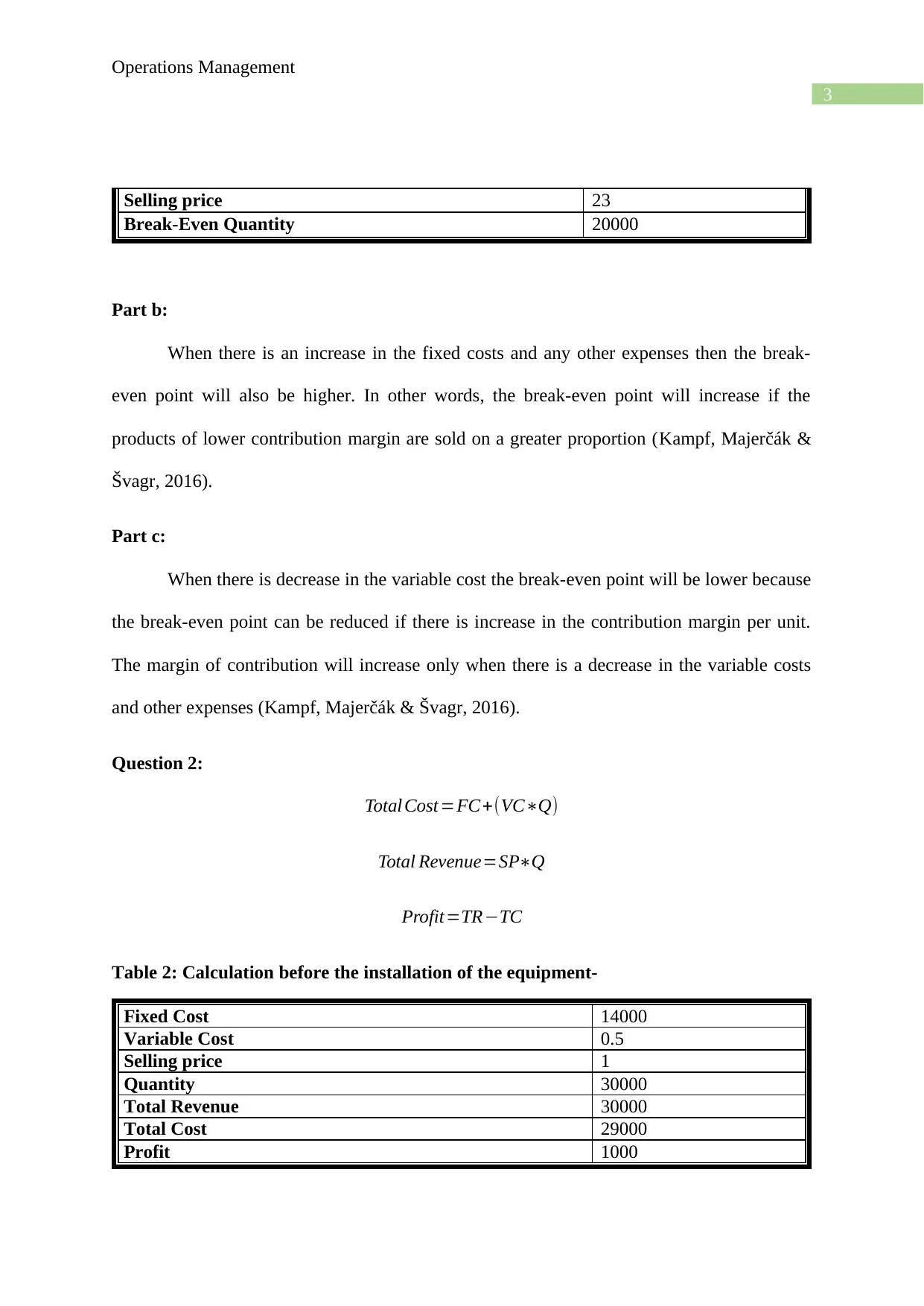
3
Operations Management
Selling price 23
Break-Even Quantity 20000
Part b:
When there is an increase in the fixed costs and any other expenses then the break-
even point will also be higher. In other words, the break-even point will increase if the
products of lower contribution margin are sold on a greater proportion (Kampf, Majerčák &
Švagr, 2016).
Part c:
When there is decrease in the variable cost the break-even point will be lower because
the break-even point can be reduced if there is increase in the contribution margin per unit.
The margin of contribution will increase only when there is a decrease in the variable costs
and other expenses (Kampf, Majerčák & Švagr, 2016).
Question 2:
Total Cost =FC+(VC∗Q)
Total Revenue=SP∗Q
Profit=TR−TC
Table 2: Calculation before the installation of the equipment-
Fixed Cost 14000
Variable Cost 0.5
Selling price 1
Quantity 30000
Total Revenue 30000
Total Cost 29000
Profit 1000
Operations Management
Selling price 23
Break-Even Quantity 20000
Part b:
When there is an increase in the fixed costs and any other expenses then the break-
even point will also be higher. In other words, the break-even point will increase if the
products of lower contribution margin are sold on a greater proportion (Kampf, Majerčák &
Švagr, 2016).
Part c:
When there is decrease in the variable cost the break-even point will be lower because
the break-even point can be reduced if there is increase in the contribution margin per unit.
The margin of contribution will increase only when there is a decrease in the variable costs
and other expenses (Kampf, Majerčák & Švagr, 2016).
Question 2:
Total Cost =FC+(VC∗Q)
Total Revenue=SP∗Q
Profit=TR−TC
Table 2: Calculation before the installation of the equipment-
Fixed Cost 14000
Variable Cost 0.5
Selling price 1
Quantity 30000
Total Revenue 30000
Total Cost 29000
Profit 1000
Secure Best Marks with AI Grader
Need help grading? Try our AI Grader for instant feedback on your assignments.
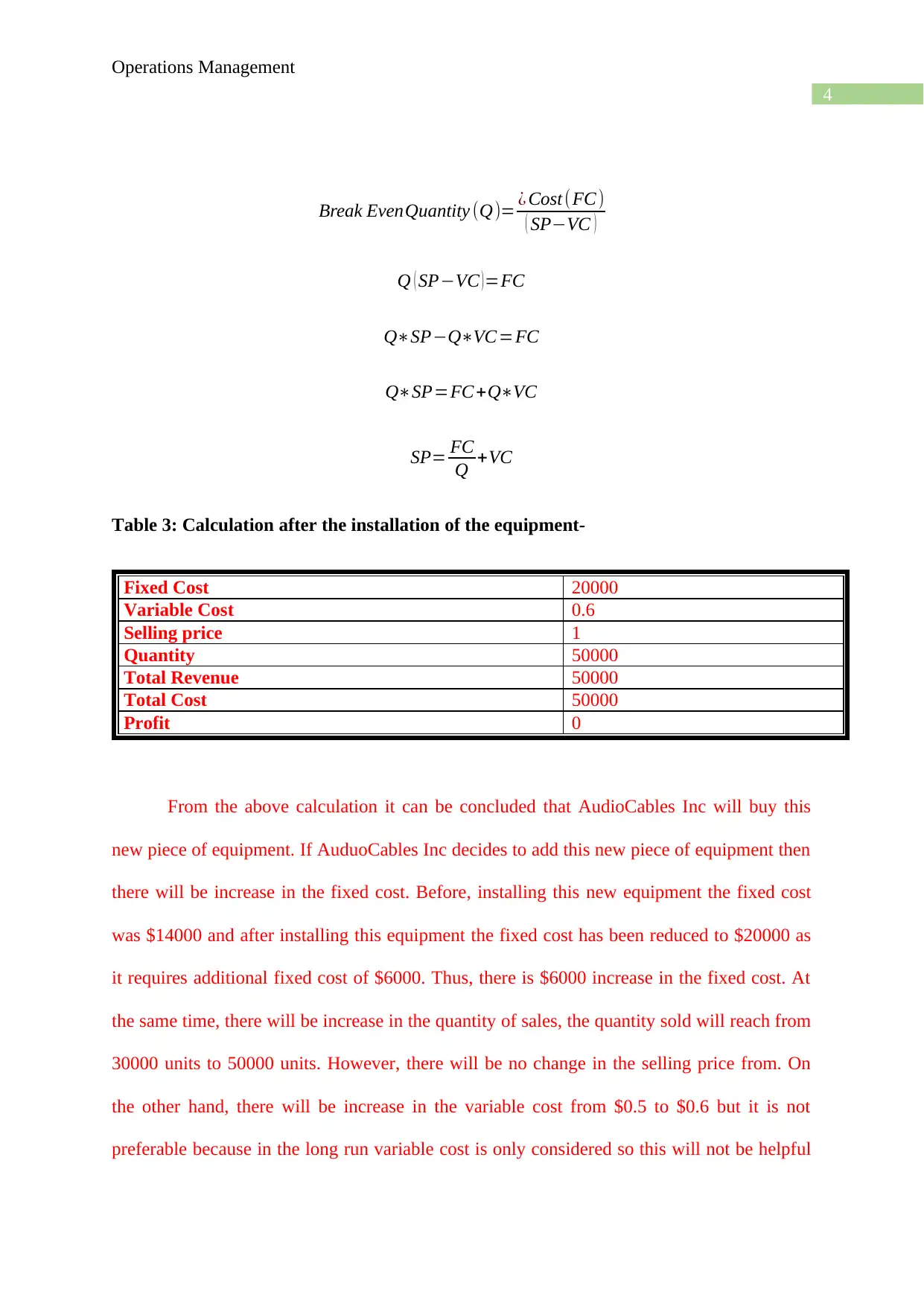
4
Operations Management
Break EvenQuantity (Q)= ¿ Cost (FC)
( SP−VC )
Q ( SP−VC ) =FC
Q∗SP−Q∗VC =FC
Q∗SP=FC +Q∗VC
SP= FC
Q +VC
Table 3: Calculation after the installation of the equipment-
Fixed Cost 20000
Variable Cost 0.6
Selling price 1
Quantity 50000
Total Revenue 50000
Total Cost 50000
Profit 0
From the above calculation it can be concluded that AudioCables Inc will buy this
new piece of equipment. If AuduoCables Inc decides to add this new piece of equipment then
there will be increase in the fixed cost. Before, installing this new equipment the fixed cost
was $14000 and after installing this equipment the fixed cost has been reduced to $20000 as
it requires additional fixed cost of $6000. Thus, there is $6000 increase in the fixed cost. At
the same time, there will be increase in the quantity of sales, the quantity sold will reach from
30000 units to 50000 units. However, there will be no change in the selling price from. On
the other hand, there will be increase in the variable cost from $0.5 to $0.6 but it is not
preferable because in the long run variable cost is only considered so this will not be helpful
Operations Management
Break EvenQuantity (Q)= ¿ Cost (FC)
( SP−VC )
Q ( SP−VC ) =FC
Q∗SP−Q∗VC =FC
Q∗SP=FC +Q∗VC
SP= FC
Q +VC
Table 3: Calculation after the installation of the equipment-
Fixed Cost 20000
Variable Cost 0.6
Selling price 1
Quantity 50000
Total Revenue 50000
Total Cost 50000
Profit 0
From the above calculation it can be concluded that AudioCables Inc will buy this
new piece of equipment. If AuduoCables Inc decides to add this new piece of equipment then
there will be increase in the fixed cost. Before, installing this new equipment the fixed cost
was $14000 and after installing this equipment the fixed cost has been reduced to $20000 as
it requires additional fixed cost of $6000. Thus, there is $6000 increase in the fixed cost. At
the same time, there will be increase in the quantity of sales, the quantity sold will reach from
30000 units to 50000 units. However, there will be no change in the selling price from. On
the other hand, there will be increase in the variable cost from $0.5 to $0.6 but it is not
preferable because in the long run variable cost is only considered so this will not be helpful
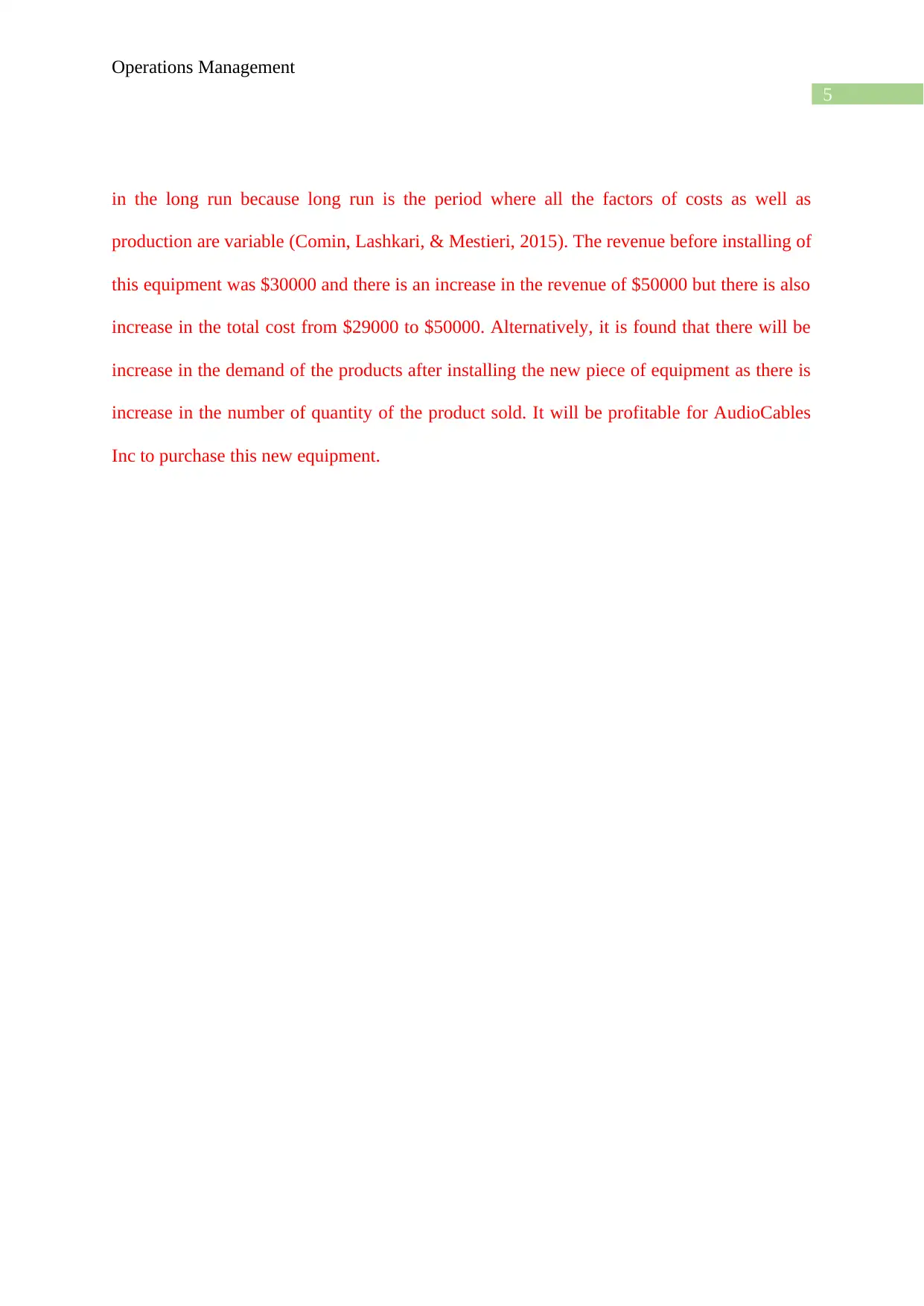
5
Operations Management
in the long run because long run is the period where all the factors of costs as well as
production are variable (Comin, Lashkari, & Mestieri, 2015). The revenue before installing of
this equipment was $30000 and there is an increase in the revenue of $50000 but there is also
increase in the total cost from $29000 to $50000. Alternatively, it is found that there will be
increase in the demand of the products after installing the new piece of equipment as there is
increase in the number of quantity of the product sold. It will be profitable for AudioCables
Inc to purchase this new equipment.
Operations Management
in the long run because long run is the period where all the factors of costs as well as
production are variable (Comin, Lashkari, & Mestieri, 2015). The revenue before installing of
this equipment was $30000 and there is an increase in the revenue of $50000 but there is also
increase in the total cost from $29000 to $50000. Alternatively, it is found that there will be
increase in the demand of the products after installing the new piece of equipment as there is
increase in the number of quantity of the product sold. It will be profitable for AudioCables
Inc to purchase this new equipment.
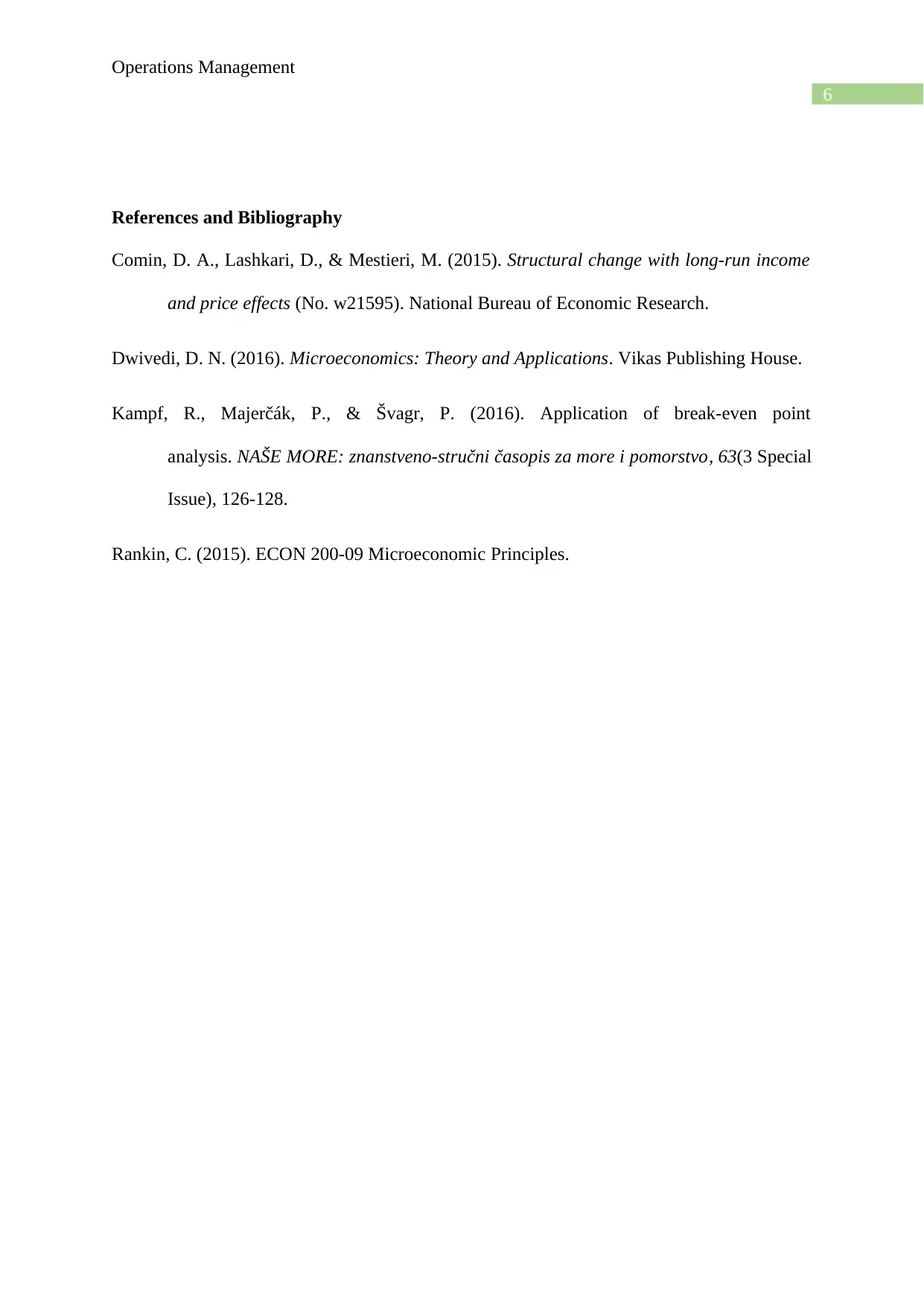
6
Operations Management
References and Bibliography
Comin, D. A., Lashkari, D., & Mestieri, M. (2015). Structural change with long-run income
and price effects (No. w21595). National Bureau of Economic Research.
Dwivedi, D. N. (2016). Microeconomics: Theory and Applications. Vikas Publishing House.
Kampf, R., Majerčák, P., & Švagr, P. (2016). Application of break-even point
analysis. NAŠE MORE: znanstveno-stručni časopis za more i pomorstvo, 63(3 Special
Issue), 126-128.
Rankin, C. (2015). ECON 200-09 Microeconomic Principles.
Operations Management
References and Bibliography
Comin, D. A., Lashkari, D., & Mestieri, M. (2015). Structural change with long-run income
and price effects (No. w21595). National Bureau of Economic Research.
Dwivedi, D. N. (2016). Microeconomics: Theory and Applications. Vikas Publishing House.
Kampf, R., Majerčák, P., & Švagr, P. (2016). Application of break-even point
analysis. NAŠE MORE: znanstveno-stručni časopis za more i pomorstvo, 63(3 Special
Issue), 126-128.
Rankin, C. (2015). ECON 200-09 Microeconomic Principles.
1 out of 7
Related Documents
Your All-in-One AI-Powered Toolkit for Academic Success.
+13062052269
info@desklib.com
Available 24*7 on WhatsApp / Email
![[object Object]](/_next/static/media/star-bottom.7253800d.svg)
Unlock your academic potential
© 2024 | Zucol Services PVT LTD | All rights reserved.





